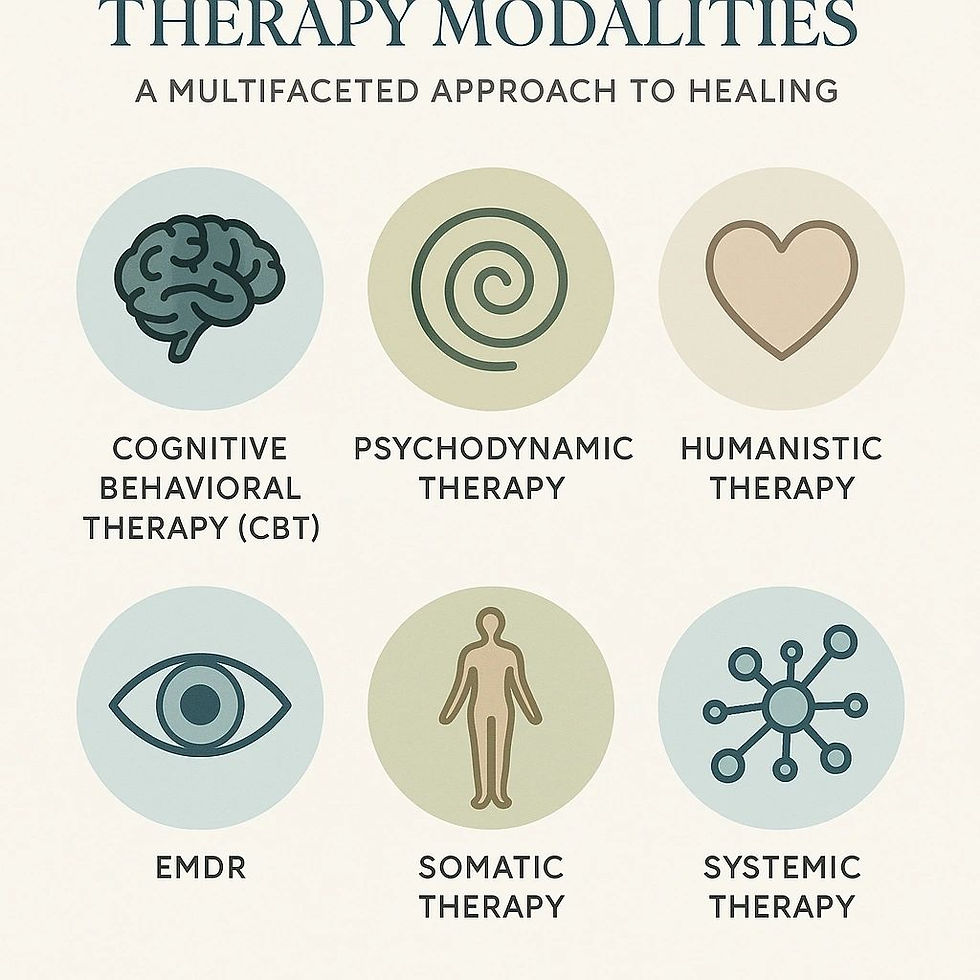How to Build a Mental Health Toolkit: Your Personal Guide to Mental Wellness
- michelleluna
- Jun 9
- 2 min read

Mental health isn’t something we can afford to ignore. Just like we keep a first-aid kit for physical injuries, having a mental health toolkit ready can help us navigate life’s emotional bumps with more resilience and self-compassion.
A mental health toolkit is a personalized collection of strategies, habits, and resources you can turn to when stress, anxiety, or emotional lows start to take a toll. Think of it as your emotional emergency kit—built to suit you, your lifestyle, and your needs.
1. Start with Self-Awareness
The first step in building your mental health toolkit is understanding what works for you. Pay attention to:
What tends to trigger your stress or anxiety?
What calms you down or brings you comfort?
What makes you feel connected, safe, or motivated?
You don’t have to figure it all out at once. Self-awareness grows over time, and your toolkit can evolve with you.
2. Stock It with Coping Tools
Here are some ideas to help you fill your toolkit:
🧘♀️ Mindfulness Practices
Deep breathing exercises (like box breathing or 4-7-8 breathing)
Meditation or body scan routines
Grounding techniques (5-4-3-2-1 method)
📓 Journaling Prompts
Gratitude journaling
Emotion tracking (name it to tame it!)
Writing letters to yourself
🎵 Comforting Sensory Tools
A playlist of soothing or uplifting music
Aromatherapy (lavender, eucalyptus, etc.)
A cozy blanket or stress ball
🏃♂️ Movement and Release
A walk outside
Stretching or yoga
Dance, sports, or any physical outlet you enjoy
3. Create a Support System Section
Connection is essential to mental health. Add these to your toolkit:
A list of supportive friends or family members you can reach out to
Contact info for a therapist or counselor
Crisis hotline numbers (just in case)
Online support communities or forums
4. Include Positive Reminders
Sometimes we just need a little nudge in the right direction. Try:
Affirmations or positive quotes
Photos that make you smile
A note from someone you love—or one you write to your future self
5. Build Healthy Routines
Your toolkit isn’t just for bad days. It should help prevent burnout too. Daily habits like:
Regular sleep
Staying hydrated
Balanced meals
Setting boundaries around work and social media
These may seem small, but they’re the foundation of long-term wellness.
6. Keep It Accessible
Whether it’s a literal box on your shelf, a note in your phone, or a page in your journal—make sure your mental health toolkit is easy to reach when you need it most. You might even create a digital version in an app like Notion, Google Keep, or even Pinterest!
Final Thoughts
Your mental health toolkit is a living, breathing thing. You’ll add to it, update it, and maybe even toss a few tools out along the way—and that’s totally okay. The most important thing is that it’s yours.
Take the time to build it before you need it, so it’s ready to support you when you do. You deserve care, not just when things fall apart, but every single day.








Comments